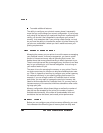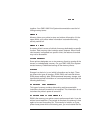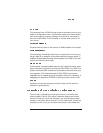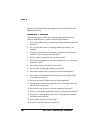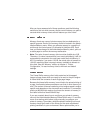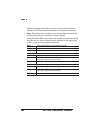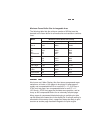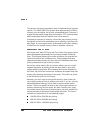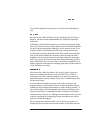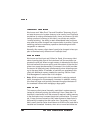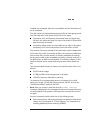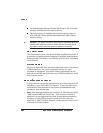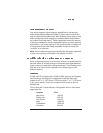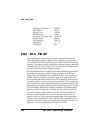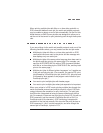
The amount of memory required for each compressed block is printer
specific. The QMS 1660 Print System takes approximately 64 KB of
memory from the display list for each compressed block. However, if
a page includes raster image data (for example, TIFF or bitmap data),
each compressed block will require much more memory.
Increasing the amount of memory in this client may improve printing
throughput and minimize slowdowns due to collating or printing com-
plex pages. If not enough memory is allocated to this client, memory
is taken from the excess memory client to complete a print job.
Also known as K Mem PS Fonts and Font Cache, this memory client
stores bitmapped representations of previously scaled PostScript
fonts. This process reduces the number of times a font must be con-
verted from outline form to bitmap form. Printing pages that have
characters already stored in the font cache is immensely faster than
printing characters not yet in the font cache.
As the font cache memory fills, the printer makes room for new bit-
mapped characters by erasing those that have been in the cache
longest without being used. By increasing the memory allocated to
this client, the printer can store more characters and spend less time
erasing and replacing characters in the cache. This client has a limit
to the maximum point size it will store.
Normally, you don’t need to change this memory client unless you
use a large number of fonts at various point sizes. If you do, you may
allocate additional memory to this client to improve printer perfor-
mance. There’s no specific formula to use in figuring the amount of
memory required by the font cache, but after a certain point, large
font caches cause the printer to take longer to print than smaller font
caches because of the search time through the cache. The recom-
mended font cache size is in the following ranges:
128-256 KB for 300x300 dpi printing
256-512 KB for 600x600 dpi printing
256-512 KB for 1200x600 dpi printing



